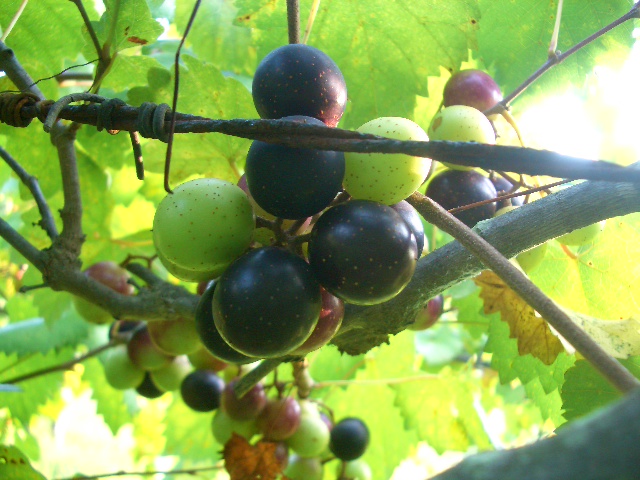By Karla Arboleda
Muscadine grapes are native crops to the deep Southeast and are naturally resistant to some pests.
Among other pests, grapevine aphids and grape root borers tend to be the most common problems when growing muscadine grapes. Oscar Liburd, a professor at the University of Florida Institute of Food and Agricultural Sciences and fruit and vegetable entomologist, says the pests that are found in muscadines are minimal, but still cause some issues in the field.

“Muscadine grapes don’t tend to be very susceptible to pests,” Liburd said, adding that grapevine aphids have shown up more on the crop. “It’s been in the Southeast for quite some time, but for some reason the pest is becoming more prevalent.
REDUCED-RISK PESTICIDES
Liburd also stresses that good pests can suffer if muscadine growers opt for certain products over reduced-risk pesticides.
“Conventional pesticides have knocked down what we call the beneficial insects, or what we call the natural enemies, that usually regulate the aphid population,” Liburd said. “A lot of the work we are doing right now is focusing on reduced-risk pesticides (like) Delegate.”
In addition to Delegate, Liburd recommends other reduced-risk pesticides such as Agri-Mek and Sivanto that are efficient in mite control. These products can also help control the presence of grape root borers, flea beetles, thrips, spider mites, mealybugs and leafhoppers.
SCOUTING AND TRAPPING
With scouting methods like in situ counts, which determine how many insects are on a plant, growers can keep their muscadine grape issues under control. White or yellow sticky cards can help to monitor thrips, and Liburd recommends trapping grape root borers with their pheromones.
“One of the first things we did was to find a more sustainable trap that can be used to monitor the grape root borer,” Liburd said, referring to his research on bucket traps. “The good thing about those bucket traps (is) you can use them for a very long period of time.”
At $9 apiece, bucket traps can last for 10 years in comparison to wing traps that need to be changed out on a weekly basis in order to catch grape root borers. When comparing which colored bucket trap was most selective, the green color attracted the most male pests.
“We looked at blue, white and yellow, and we looked at a multi-colored trap,” Liburd said. “If it’s more selective, it doesn’t capture a lot of the beneficial insects.”
The grape root borer is a very destructive pest, and although muscadine grapes are less susceptible to infestation in the deep Southeast, grape root borers could still heavily affect growers’ crops.
“One larva can reduce yield by 50 percent, whereas two to three larvae … are capable of killing an entire vine,” Liburd said.










